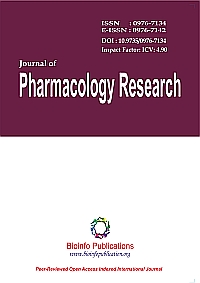
“Cannabinoids are derivatives that are either compounds occurring naturally in the plant, Cannabis sativa or synthetic analogs of these molecules. The first and most widely investigated of the cannabinoids is ∆9-tetrahydrocannabinol (Δ9-THC), which is the main psychotropic constituent of cannabis and undergoes significant binding to cannabinoid receptors.
These cannabinoid receptors are seven-transmembrane receptors that received their name from the fact that they respond to cannabinoid compounds, including Δ9-THC. The cannabinoid receptors have been described in rat, human and mouse brains and they have been named as the CB1 and CB2 cannabinoid receptors.
Later, an endogenous molecule that exerts pharmacological effects similar to those described by ∆9-THC and binds to the cannabinoid receptors was discovered. This molecule, named anandamide, was the first of five endogenous cannabinoid receptor agonists described to date in the mammalian brain and other tissues. Of these endogenous cannabinoids or endocannabinoids, the most thoroughly investigated to date have been anandamide and 2-arachidonoylglycerol (2-AG).
Over the years, a significant number of articles have been published in the field of endogenous cannabinoids, suggesting a modulatory profile in multiple neurobiological roles of endocannabinoids. The general consensus accepts that the endogenous cannabinoid system includes natural ligands (such as anandamide and 2-AG), receptors (CB1 and CB2), and the main enzymes responsible for the hydrolysis of anandamide and 2-AG (fatty acid amide hydrolase [FAAH] and monoacylglycerol lipase [MAGL], respectively) as well as the anandamide membrane transporter (AMT).
To date, diverse pieces of evidence have shown that the endocannabinoid system controls multiple functions such as feeding, pain, learning and memory and has been linked with various diseases, such as Parkinson´s disease. Among the modulatory properties of the endocannabinoid system, current data indicate that the sleep-wake cycle is under the influence of endocannabinoids since the blocking of the CB1 cannabinoid receptor or the pharmacological inhibition of FAAH activity promotes wakefulness whereas the obstruction of AMT function enhances sleep. However, no solid evidence is available regarding the role of the endocannabinoid system in an unquestionable emotional component of the sleep: Dream activity.
Since dreaming is a mental activity that occurs during sleep (characterized by emotions, sensory perceptions, and bizarre components) and the endocannabinoid system modulates neurobiological processes involving consciousness, such as learning and memory, attention, pain perception, emotions and sleep, it is acceptable to hypothesize that the endocannabinoid system might be modulating dream activity. In this regard, an accumulative body of evidence in human and animal models has been reported regarding the role of the endocannabinoid system in the control of emotional states and dreams.
Moreover, preliminary studies in humans have indicated that treatment with cannabinoids may decrease post-traumatic stress disorder symptoms, including nightmares. Thus, based on a review of the literature available in PubMed, this article hypothesizes a conceptual framework within which the endocannabinoid system might influence the generation of dream experiences.”
https://www.ncbi.nlm.nih.gov/pubmed/28240187









